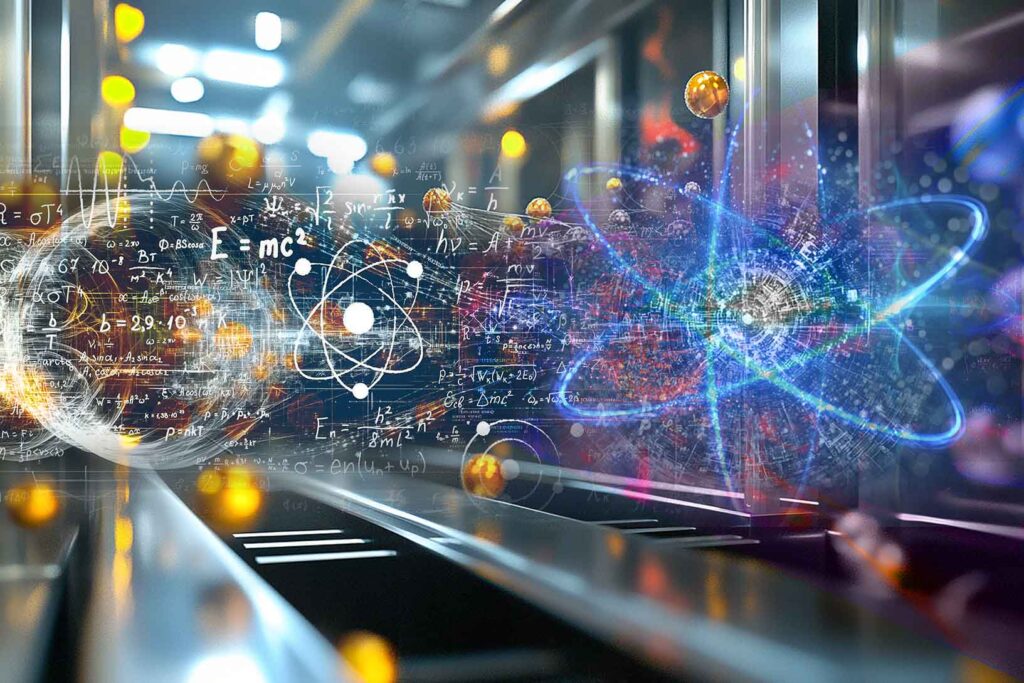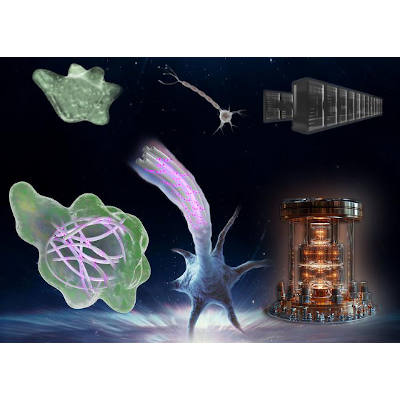Quantum Mechanics is a piece of cake: A Dive into Parastatistics
Apr. 16, 2025. 4 mins. read.
13 Interactions
Parastatistics challenges the fermion-boson binary with paraparticles—offering a bold new lens on quantum mechanics and hinting at breakthroughs in materials and quantum computing.
Introduction
In the intricate realm of quantum mechanics, where particles defy classical intuition, the traditional classification of particles into fermions and bosons has long reigned supreme. Yet, a lesser-known paradigm, ‘Parastatistics’, challenges this binary framework, offering a fresh perspective on the quantum world. Parastatistics introduces paraparticles—entities that transcend conventional categories—promising to deepen our understanding of quantum behavior and unlock novel applications. This article explores the innovative concept of parastatistics, its theoretical foundations, and its potential to reshape physics, from inspiring new materials to advancing quantum computing. By highlighting this emerging field, we aim to make the complexities of quantum mechanics more accessible and exciting, illuminating a path toward future discoveries.
The Traditional Framework: Fermions and Bosons
The bedrock of quantum mechanics lies in its classification of particles as either fermions or bosons. Fermions, such as electrons, possess half-integer spin and obey the Pauli exclusion principle, meaning no two can occupy the same quantum state—a property reflected in their antisymmetric wavefunctions. Bosons, like photons, have integer spin and can share quantum states, exhibiting symmetric wavefunctions that allow phenomena like Bose-Einstein condensation. For decades, this dichotomy was thought to encompass all fundamental particles, providing a complete framework for quantum statistics. However, parastatistics reveals that this picture is not exhaustive, setting the stage for a bold departure.
Parastatistics: A New Paradigm
Beyond Fermions and Bosons: The Rise of Paraparticles
Parastatistics introduces paraparticles—entities that defy the fermion-boson binary. Unlike their traditional counterparts, paraparticles follow generalized exclusion principles and unique exchange statistics. When two paraparticles are swapped, their wavefunctions transform via matrix operations rather than the simple sign changes (positive for bosons, negative for fermions) seen in conventional statistics. This behavior, first theorized by H.S. Green in 1953, suggests a richer variety of quantum states, particularly in lower-dimensional systems like 1D or 2D, where traditional statistics may falter.
The Mathematical Framework
The power of parastatistics lies in its mathematical elegance. In traditional quantum mechanics, particle exchange alters wavefunction symmetry predictably. For paraparticles, this exchange is governed by matrices, allowing a spectrum of statistical behaviors between the fermion and boson extremes. This framework not only generalizes quantum statistics but also hints at new physical phenomena, especially in condensed matter systems where exotic quasiparticles might emerge. While abstract, this approach provides a concrete tool for physicists to explore uncharted quantum territories.
Implications and Applications
The advent of parastatistics carries profound implications. In condensed matter physics, paraparticles could manifest as quasiparticles in systems like the fractional quantum Hall effect, potentially leading to materials with unprecedented electronic or thermal properties. In quantum computing, their unique statistics might inspire novel qubit designs or error-correction methods, enhancing computational power. Theoretically, parastatistics challenges the completeness of the fermion-boson model, suggesting undiscovered forms of matter or interactions. By broadening the quantum playbook, parastatistics invites innovation across physics and technology, making the quantum world more tangible and applicable.
Experimentation and Benchmarking: Current Evidence and Challenges
Theoretical and Experimental Foundations
While parastatistics remains largely theoretical, evidence of paraparticle-like behavior has surfaced in specific contexts. For instance, anyons—particles with fractional statistics in 2D systems—share similarities with paraparticles and have been observed in quantum Hall experiments. Theoretical models also predict their relevance in exotic states of matter. However, direct experimental confirmation of paraparticles in 3D systems remains elusive, posing a challenge for validation.
Future Research Directions
To bridge this gap, future experiments could target low-dimensional systems or engineered quantum materials where paraparticle signatures might emerge. Advances in quantum simulation, using platforms like ultracold atoms or photonic systems, could also test parastatistical predictions. Benchmarking these efforts against traditional models will be crucial to establishing parastatistics as a practical framework, pushing the field toward empirical breakthroughs.

Discussion: Implications and Future Directions
Parastatistics reframes quantum mechanics as an evolving discipline, not a closed book. By introducing paraparticles, it offers a new lens that demystifies quantum complexity, making it more approachable for students and researchers alike. This paradigm shift mirrors broader trends in physics, where questioning foundational assumptions like particle statistics sparks innovation. Current limitations, such as the lack of widespread experimental evidence, highlight the need for continued exploration. Future work might extend parastatistics to higher dimensions or integrate it with quantum field theory, potentially revolutionizing our understanding of the universe. Beyond academia, its applications could transform technology, echoing the societal impact of quantum mechanics itself.
Conclusion
Parastatistics marks a pivotal evolution in quantum mechanics, expanding the fermion-boson framework with the intriguing concept of paraparticles. Through its unique exchange statistics and mathematical depth, it not only enriches theoretical physics but also promises practical advancements in materials, computing, and beyond. This article has traced its foundations, implications, and challenges, underscoring its potential to make quantum mechanics more accessible and inspiring. As research progresses, parastatistics could herald a new era in physics—one where the quantum world, once daunting, becomes a realm of endless possibility.
Reference
Wang, Zhiyuan, and Kaden R. A. Hazzard. “Particle Exchange Statistics Beyond Fermions and Bosons.” Nature 637, no. 8045 (January 8, 2025): 314–18. https://doi.org/10.1038/s41586-024-08262-7.
Let us know your thoughts! Sign up for a Mindplex account now, join our Telegram, or follow us on Twitter.


.png)

.png)


.png)









2 Comments
2 thoughts on “Quantum Mechanics is a piece of cake: A Dive into Parastatistics”
very interesting
🟨 😴 😡 ❌ 🤮 💩
This article introduces parastatistics, challenging the traditional fermion-boson classification with paraparticles and unique exchange statistics. It highlights the potential for breakthroughs in materials science and quantum computing. While still theoretical, parastatistics could revolutionize our understanding of quantum mechanics and drive technological innovation.
🟨 😴 😡 ❌ 🤮 💩